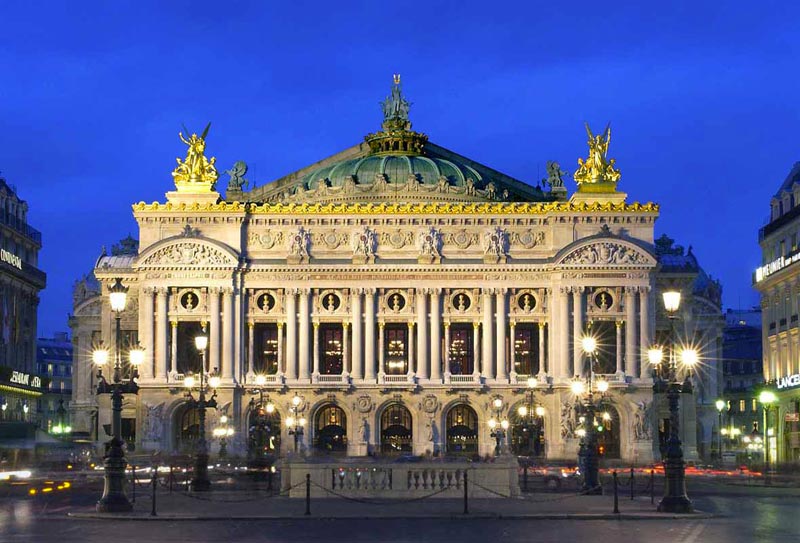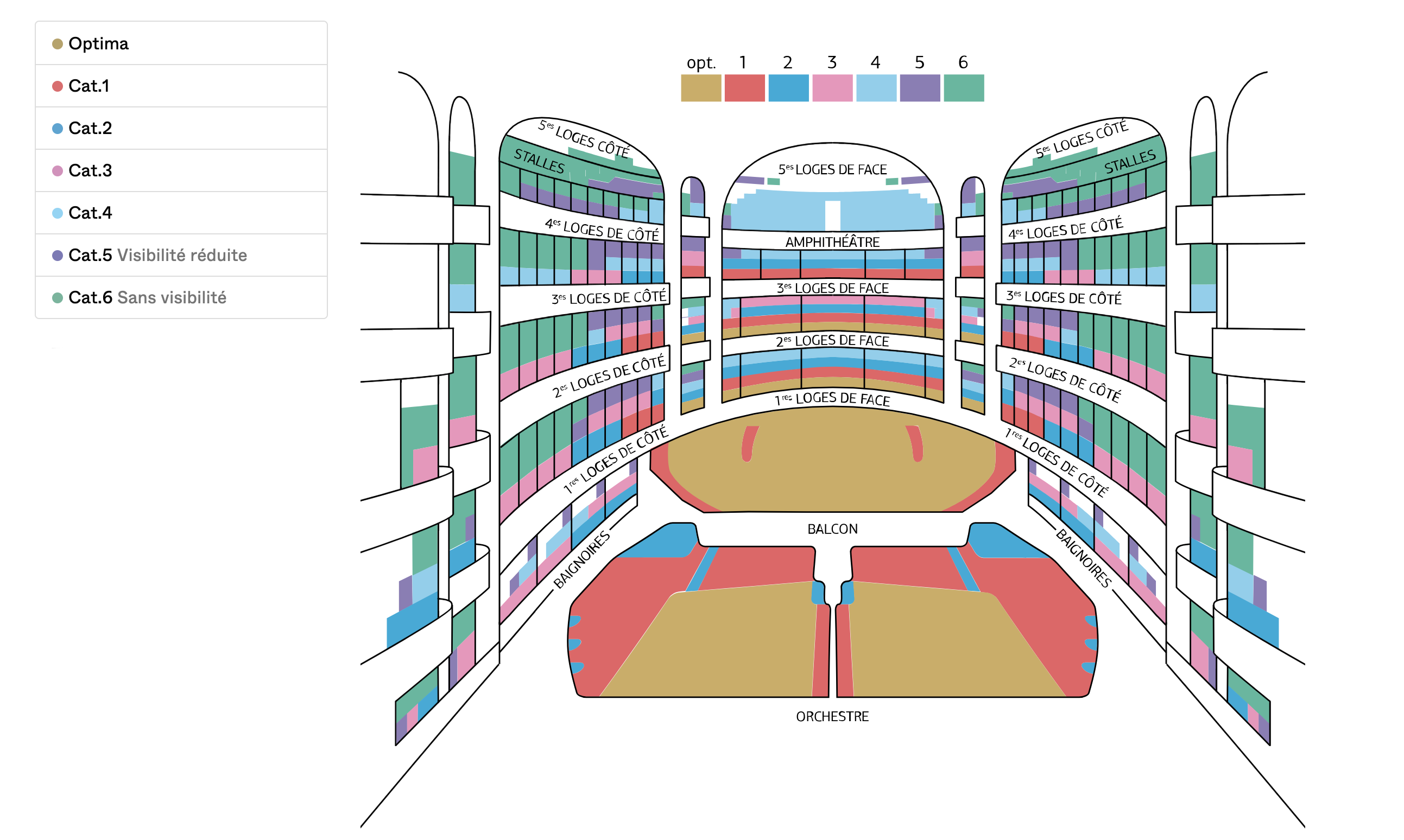Tchaïkovski's Iolanta & The Nutcracker

Lieu
Place de l’Opéra 75009 Paris
Capacité 1900 sièges
Durée
4 hours
2 intermissions
Détails
Opera & ballet
Recommended for all ages
In Russian with English & French subtitles
Highlights: Tchaïkovski's Iolanta & The Nutcracker
Story: Tchaïkovski's Iolanta & The Nutcracker
Avis
Opéra Palais Garnier
Histoire et anecdotes de l'Opéra Palais Garnier
C’est l’une des scènes les plus emblématiques de toute la France. Le Palais Garnier fut construit entre 1860 et 1875 et conçu par l’architecte de renom Charles Garnier, sélectionné parmi une poignée d’architectes talentueux après une féroce compétition. Le bâtiment en lui-même est déjà une œuvre d’art et fut l’une des constructions les plus coûteuses du Second Empire, sous le règne de Napoléon III. L’utilisation élaborée de différents matériaux pour offrir une somptueuse façade multicolore est typique de nombreuses œuvres réalisées sous le règne de Napoléon III, de même que les sculptures de diverses figures de la mythologie grecque. L’inauguration officielle eut lieu en 1875 et les maires de Londres et d’Amsterdam, le roi Alfonso XII d’Espagne et des centaines de personnes de la haute société européenne y assistèrent.
L’intérieur a été méticuleusement dessiné avec des couloirs qui s’entremêlent, des alcôves et des paliers qui permettent à un grand nombre de personnes de se déplacer sans encombre ; mais également un immense escalier en marbre et le grand foyer couvert de peintures dorées, qui servait de salon pour la haute société parisienne. L’auditorium est quant à lui à l’italienne, c’est-à-dire en forme de fer à cheval, avec 1 900 sièges. La scène, qui est la plus large d’Europe et peut accueillir 450 artistes, se révèle aux regards lorsque le magnifique rideau peint se lève. C’est encore Garnier qui a conçu le monumental lustre de sept tonnes qui illumine le public. En 1986, l’un des nombreux contrepoids du lustre se rompit et tua un concierge. Cet accident inspira une scène du roman adapté en comédie musicale Le Fantôme de l’Opéra. L’espace au-dessus de l’auditorium dans le dôme de la coupole était autrefois utilisé uniquement pour nettoyer le lustre, mais a depuis été transformé en espace pour les répétitions d’opéras et de danse.
Ce magnifique édifice était initialement désigné comme l’Académie impériale de musique, mais avec la chute du Second Empire et le début de la IIIe République, le nom a été judicieusement changé en Académie nationale de musique, inscription que l’on peut encore lire aujourd’hui sur la façade extérieure. Garnier avait imaginé ce que pourrait devenir les alentours du bâtiment et avait choisi d’en faire un édifice opulent. Cette opulence très Second Empire est toujours bien visible. L’avenue de l’opéra reste la seule avenue parisienne sans arbres, car Garnier avait explicitement empêché Haussmann de planter des arbres sur l’avenue de l’Opéra ; selon lui, ceux-ci auraient empêché le Palais Garnier de faire converger tous les regards vers lui, de gâcher ainsi la perspective. Le Palais prit officiellement son nom en 1989, avec la construction de l’Opéra Bastille et le lieu accueille désormais opéras et ballets. L’Opéra Palais Garnier est magnifique vu de l’extérieur. Sa décoration intérieure est somptueuse. Une visite guidée vous permettra de comprendre sa construction et de voir la richesse de la décoration et notamment celle du Grand Foyer.
Infos pratiques
Capacité : 1979
Accès handicapé : Oui - afin de garantir l’accès aux emplacements spécifiques, nous vous demandons d’effectuer votre réservation au minimum 15 jours avant la représentation.
Climatisé : Oui
Chauffé : Oui
Vestiaire : Oui (service gratuit)
FAQ
Where will I be seated and will I see the subtitles properly?
There are a maximum of three categories available, each of which provides a comfortable view of the subtitles. The theatre is an Italian style auditorium, meaning the seats are in a horse-shoe shape. Theatre in Paris guests are centrally placed either in the orchestra, on the first level/mezzanine, or in the second, third, and fourth level lodge boxes to have an optimal view of the stage and subtitles.
How do I get to the theatre?
The theatre is accessible by the metro station Opéra (Lines 3, 7, 8 and RER A). Our hotline can be reached in case of difficulty finding the theatre weekdays from 10 am to 7pm Paris time. For details, we invite you to consult the map above.
What do I do when I get to the theatre?
We invite you to arrive 20 minutes before the beginning of the show, and present your voucher at the front desk. The theatre's English-speaking staff members will guide you to your seats. Please note that the performances at the Palais Garnier begin precisely on time, and all late arrivals will not be permitted to enter the auditorium until intermission.
How long does the show last?
The show lasts four hours, including two intermissions.
Is it a show for travellers or French people?
Both! The Palais Garnier has been welcoming audiences from all over the world for close to 150 years. This performance is sung in Tchaïkovski's original Russian, and subtitles in both French and English are provided for audiences to appreciate in one of France’s most iconic venues.
Subtitles or “surtitles”?
Surtitles (also called supertitles) are the theatre equivalent of subtitles. That’s because in French “sur” means “above”. At the Palais Garnier, the text is projected both on the sides of the auditorium, and centrally directly above the stage. Read more about surtitles here.
Does the venue have a specific dress code?
For Parisian operas and ballets, the dress tends to be a bit fancier than in other venues, so feel free to have a little fun and dress to impress. Many Parisians will arrive directly from work, dressed in casual chic attire. Generally, elegant casual wear is required, jackets are recommended for men. Shorts, Bermuda shorts, flip-flops, sportswear and trainers are discouraged.
Is there a coat check available?
Free cloakrooms are available on various floors of the theatre. Travel bags and suitcase are not allowed.
Can I take photos of the performance?
In order not to disturb the artists on stage, and for the comfort of other guests, you are not permitted to photograph, film or record the performance for the duration of the show. As long as the performance is not currently in session, feel free to take a snapshot of the wonderful venue to remember your night out!
What is included with my tickets?
A dedicated show programme, a complimentary glass of champagne, and exclusive access to the beautiful Salon Liebermann is included with your tickets.
Where do I collect my show programme and champagne?
At the Opéra Garnier, you can collect your included show programme in the main store, at the programme stand in the entry hall, or at the programme stand at the bottom of the Grand Staircase.
You can choose to enjoy your champagne or desired beverage before the performance or during intermission at any of the public bars or in the exclusive Salon Liebermann. The Salon is located on the right-hand side of the Grand Foyer, behind the fireplace.







